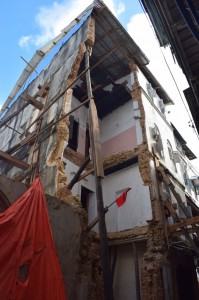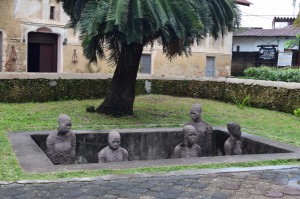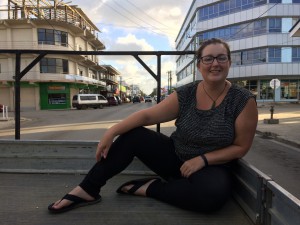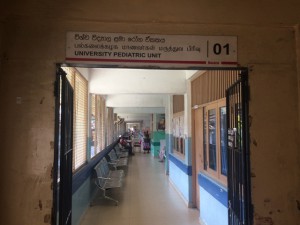Management of cases in a Paediatric ICU is an area I have not had a lot of experience in during my clinical training so this week I chose to spend my time on this ward to further my knowledge of this specialty. It was explained to me by the consultant early on in the first ward round that the most challenging aspect of managing children on the ward is discussing end of life care due to the Sri Lankan emphasis upon the sanctity of life. › Continue reading…
Archive for 'News'
The idea of a hospital being ‘at capacity’ has gained a new meaning for me since my attachment started on the Paediatrics ward at Karapitiya. This year has been particularly bad for dengue in Sri Lanka with an estimated 81, 000 dengue patients nationwide and around 250 deaths from this mosquito-borne virus.
This morning was busy in the labour room with five babies being born before midday. The layout of this area is strikingly different from the standard maternity suite in a New Zealand hospital. The room is one open space with eight curtained beds housed in two bays. Perhaps most surprising to me was that it is normal and expected that women birth alone here without any family or partner support. This included women coping with the delivery of babies with very poor, terminal prognoses such as one woman with an anencephalic foetus who was being induced at 41 weeks. › Continue reading…
Things have changed since my partner Steve and I were last in Sri Lanka. We travelled here for a month in 1999 during a brief ceasefire during the Tamil Tiger years. I’ve always had a fascination with islands and Sri Lanka didn’t disappoint despite our travel being restricted to avoiding the then more dangerous north of the island. › Continue reading…
For the second half of my time in Tanzania, I worked in the NICU and maternity ward. Nothing could have prepared me for this. 
After LIME, I caught many planes to finally make it to Zanzibar in Tanzania. Zanzibar is a coastal island part of Tanzania that has a fascinating history. It’s known for two big things: for being the home of spice and for being the eastern hub of human slave trading in Africa.

Next on the agenda for the elective was a quick stop off to Melbourne for a conference called the LIME connection. This conference brought together indigenous people from New Zealand, Australia, Canada and Hawaii for a week of discussions about what was being done to improve indigenous education in medical curriculum. › Continue reading…
After finishing up in Paediatrics, I moved to emergency care for two weeks. The emergency room was staffed by one doctor and a couple of nurses,  one of which was also the ambulance medic if anyone had a call out. This was where I spent a lot of time as a first responder. Often there is not enough staff to send a doctor in the ambulance. › Continue reading…
one of which was also the ambulance medic if anyone had a call out. This was where I spent a lot of time as a first responder. Often there is not enough staff to send a doctor in the ambulance. › Continue reading…
Another week done here in Tonga. This past week I’ve continued in paediatrics, which continues to be an experience in itself. Among things I managed to attend, were clinics dedicated to heart diseases specifically rheumatic heart disease.
One thing I have quickly come to realise is due to the lack of resources, managing paediatric heart conditions in Tonga is challenging. There is no access to echo – diagnosis and management is purely clinical with an ECG. You have to look for signs of disease. You have to listen and quite literally use the murmurs to play it by ear. › Continue reading…
The National Rural Health Conference 2017 is fast approaching. This year, held in Wellington the conference will host eight keynote speakers and six concurrent session streams over two main days, 31 March and 1 April 2017. Within these talks the Pat Farry Rural Health Education Trust will be well represented by last year’s scholarship recipients Jono Paulin and Anna Charles-Jones. › Continue reading…


